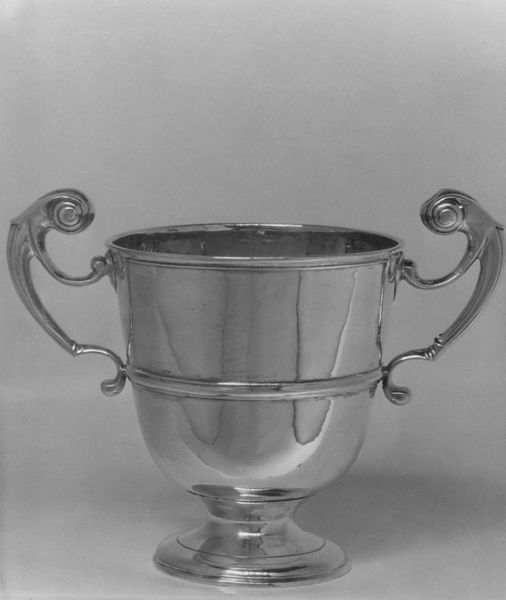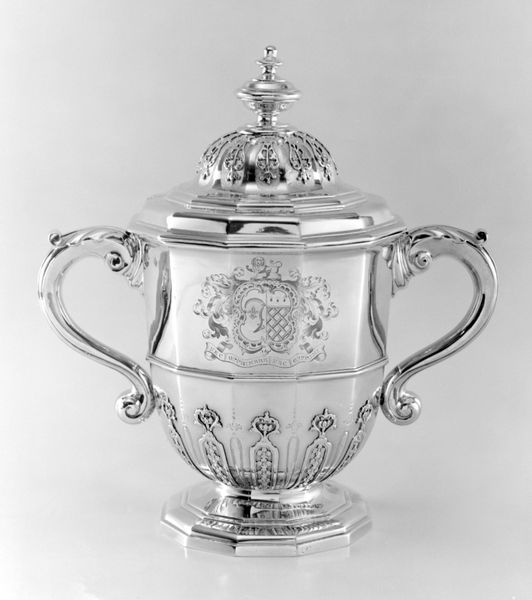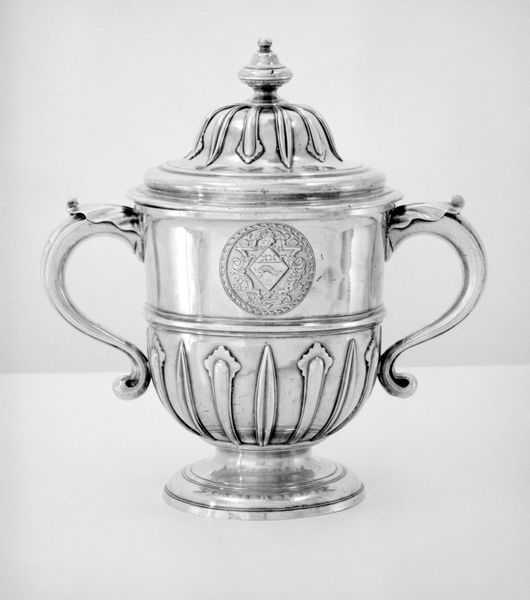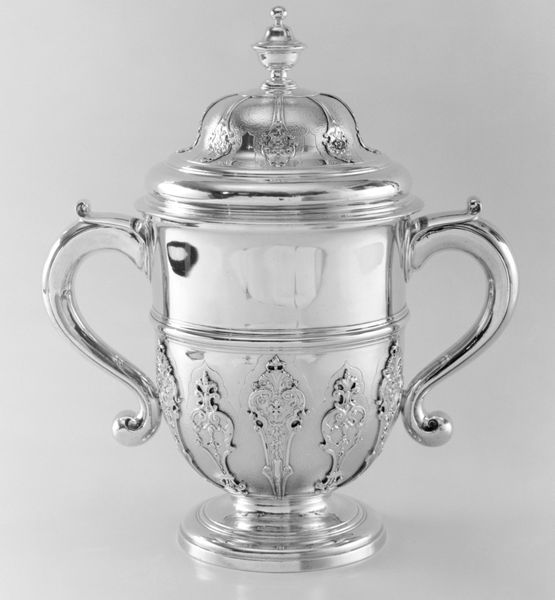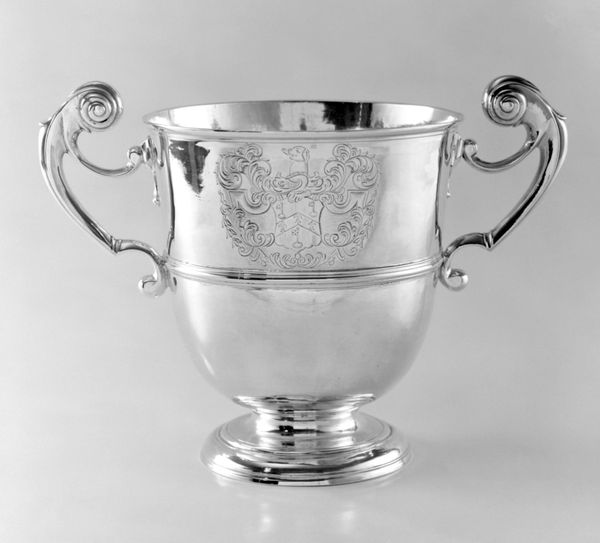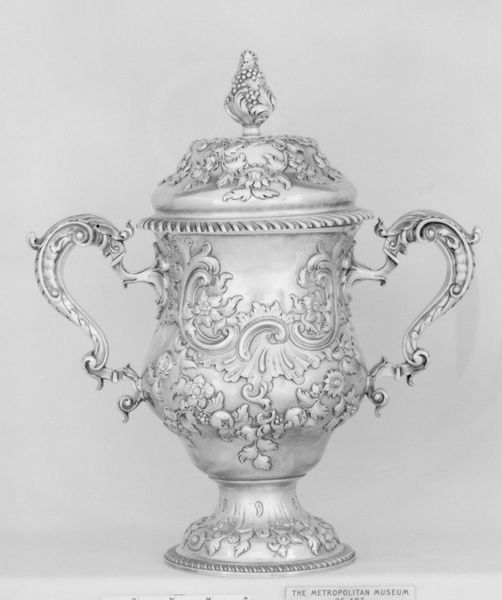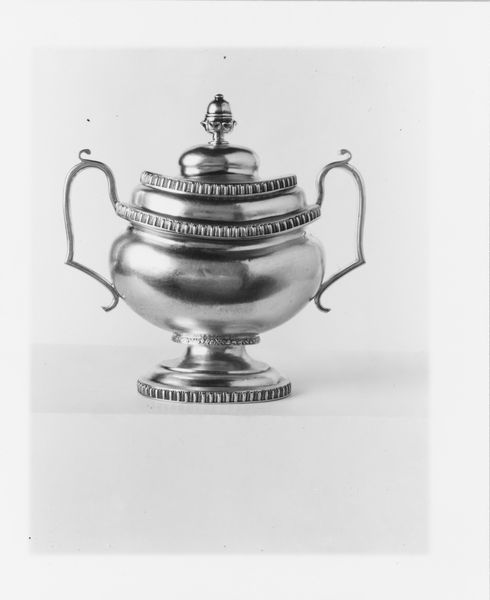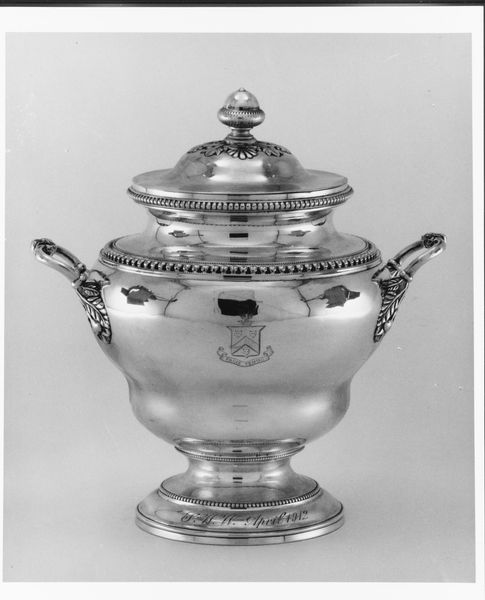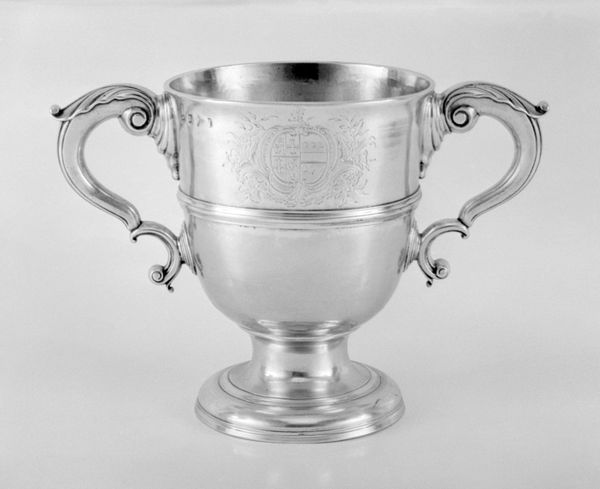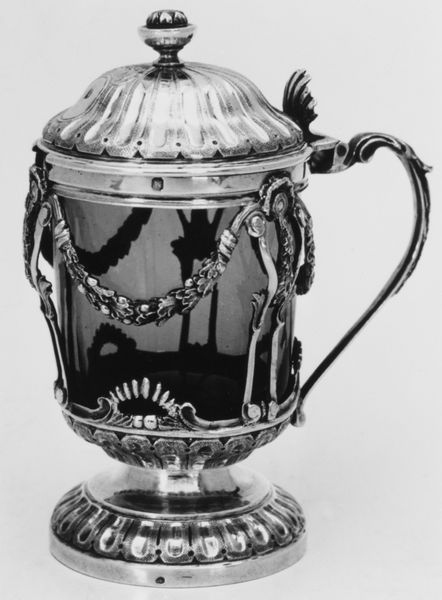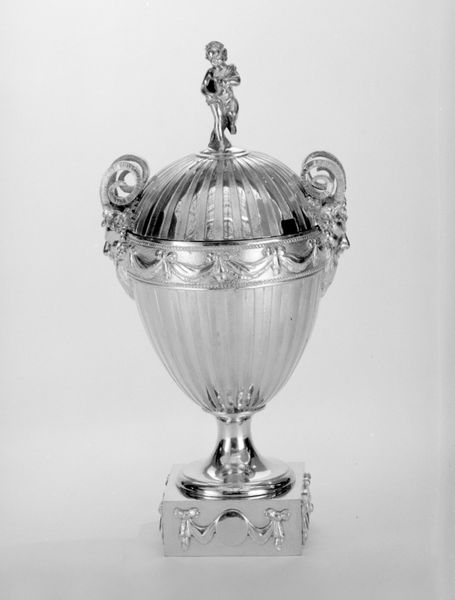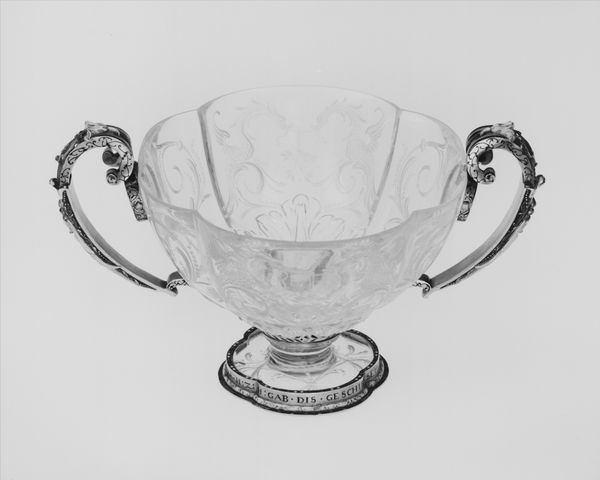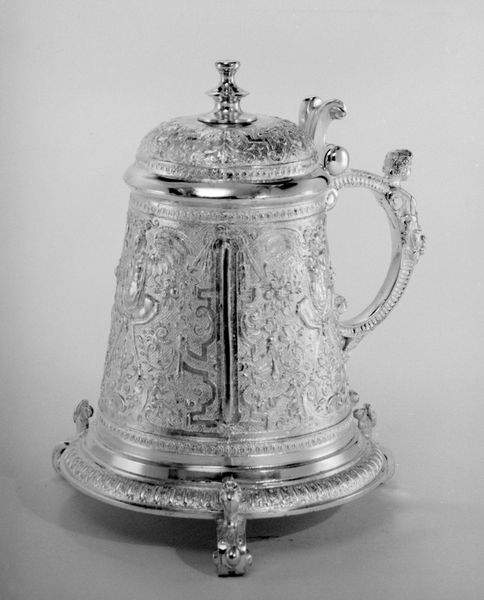
silver, sculpture
#
silver
#
sculpture
#
decorative-art
Dimensions: Overall (with cover and handles): 8 7/8 × 9 1/4 in. (22.5 × 23.5 cm)
Copyright: Public Domain
Curator: Standing before us, gleaming softly under the museum lights, is a stunning silver sculpture known as the "Two-handled cup with cover". Crafted around 1709 to 1710 by Simon Pantin I, it's an exemplary specimen of decorative art. Editor: It does possess a certain subdued elegance, doesn’t it? Austere, almost… though I imagine its gleam would have been more pronounced in its day. Curator: Indeed. Notice the clean lines, the subtly swelling form. Pantin employs a refined formalism here; observe the relationship between the handles and the body, the way the eye flows upwards to the finial on the lid. It creates a harmonious whole. Editor: It’s interesting that you use the word "harmonious." It looks, well, imprisoned somehow, with the cover sitting rigidly, holding back what could have been. All that potential… stifled, perhaps. Does that make sense? Curator: It does. And the potential resides, arguably, within the surface itself. Consider the material qualities—the silver, reflecting light but also implying weight, substance. A dichotomy that lends itself to the decorative arts which are by definition luxurious items meant for use and, by extension, display of affluence and status. Editor: Like a quiet assertion of power, wouldn’t you say? Something precious hidden under the gleam and intricate work. Did this piece likely have an intended audience? Curator: Absolutely, it likely catered to elite patrons of the early 18th century. Notice also the engraved crest on the front—further underlining the element of personal ownership, even pride. A symbol of legacy, wouldn’t you agree? Editor: You are right! In pondering this cup, I feel a kind of wistful reverence for past rituals and hushed significance. What do you take from its presence, knowing what we now do? Curator: A reminder that even objects of apparent simplicity hold layered narratives. Looking at the "Two-handled cup with cover," it reveals the power of materiality and form in telling the human story. Editor: Agreed! Thank you.
Comments
No comments
Be the first to comment and join the conversation on the ultimate creative platform.
